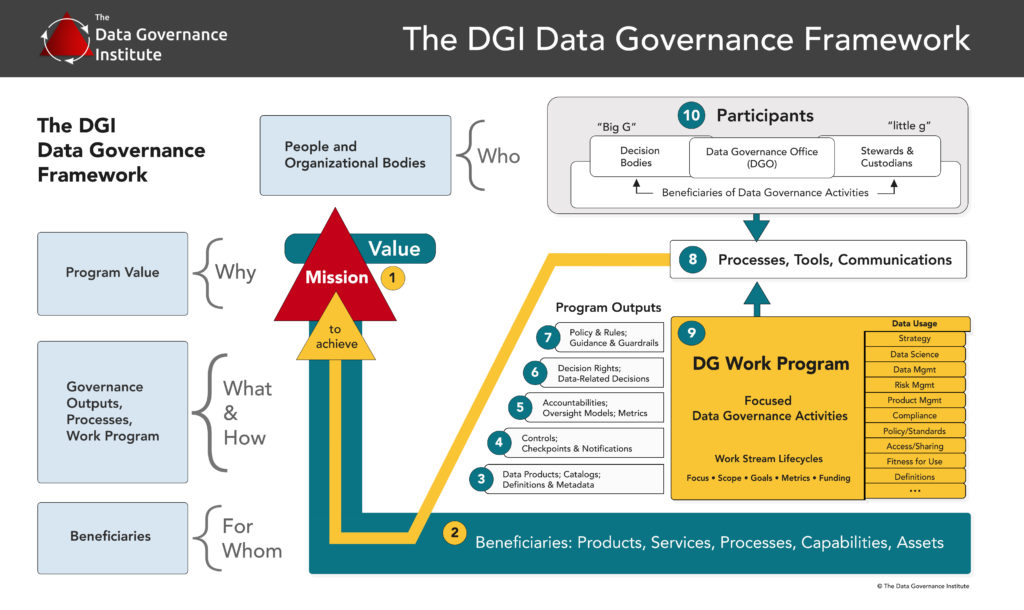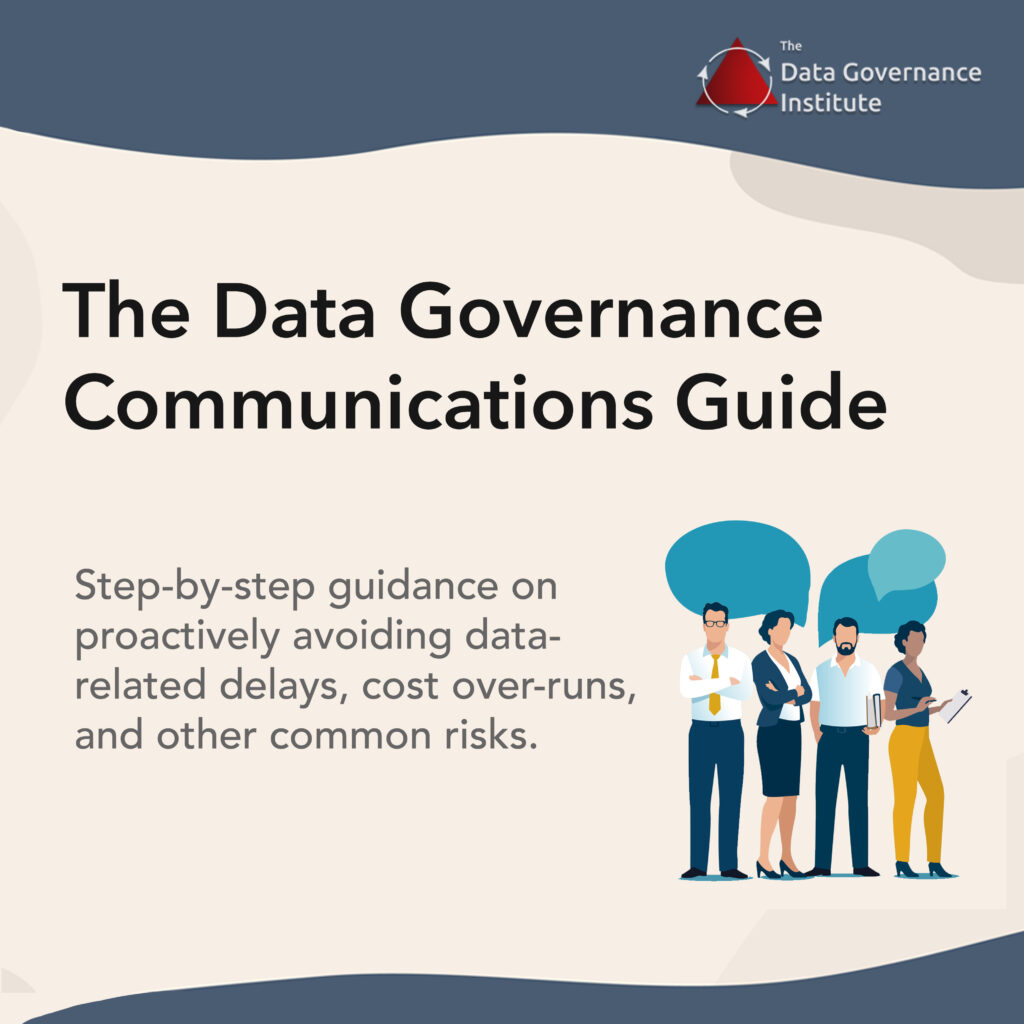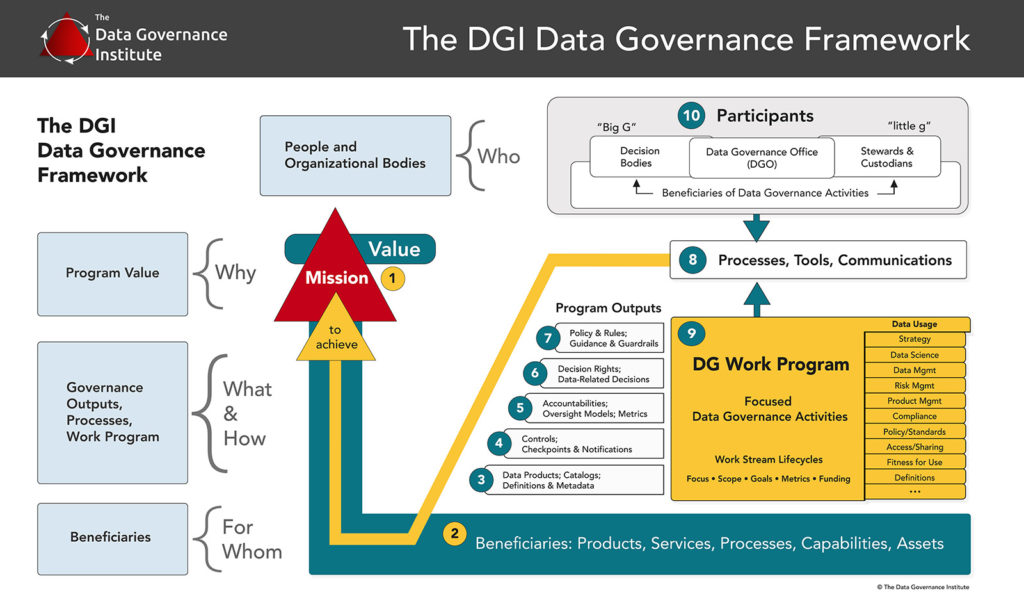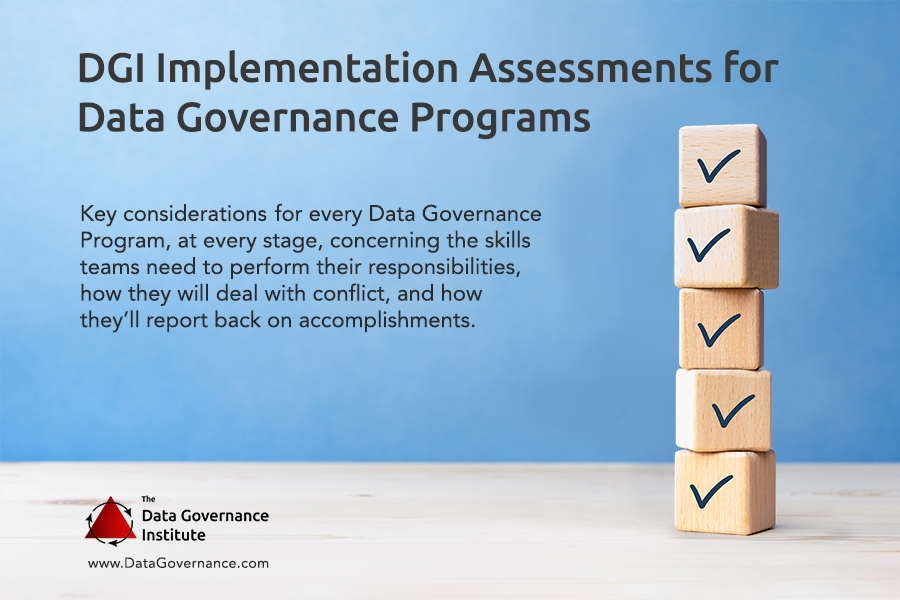DGI Data Governance Framework
The DGI Data Governance Framework is a logical structure for classifying, organizing, and communicating complex activities involved in making decisions about and taking action on enterprise data.
Does our organization need a Data Governance framework?
All organizations need to be able to make decisions about how to manage data, realize value from it, minimize cost and complexity, manage risk, and ensure compliance with ever-growing legal, regulatory, and other requirements. Management and staff need to make good decisions – decisions that stick. They need to reach consensus on how to “decide how to decide.” They need to create rules, ensure that the rules are being followed, and to deal with noncompliance, ambiguities, and issues.
In short, they need to do more than manage data; they need a governance system that sets the rules of engagement for management activities. Small organizations, or ones with simple data environments, may be able to succeed in these goals through an informal system of governance. They may not even be aware of when they are switching between making management decisions and broader governance decisions. On the other hand, larger organizations, or ones with more complex data or compliance environments, generally find that they need to step back and agree upon a more formal system of governance. The DGI Data Governance Framework is designed to assist these organizations.
(Click image to enlarge)

A Value-Driven Data Governance Program that employs the DGI Data Governance Framework begins with WHY: one or more Value Statements that are foundational to a program whose mission is to provide that value, in a recognizable and measurable manner, to the program’s beneficiaries.
Delivered value is realized through direct program outputs and by contributions to collaborative efforts that produce:
- Increased value from data assets and to assets, while also managing risk, via “little g” governance:
- Data Products; Catalogs; Definitions; Metadata
- Controls; Checkpoints; Measurements.
- Organizational Clarity, Efficiencies, and Effectiveness via “Big G” Governance outputs, such as
- Decision Rights for Data; Data-Related Decisions
- Accountabilities & Oversight Models
- Policies and Rules; Guidance and Guardrails
Supported by processes, tools, and communications, the Data Governance Work Program is managed as a Portfolio of Activities, each with its own focus, scope, goals, metrics, lifecycle, and funding model.
A Data Governance Office (DGO) drives the work program. Other participants include decision-making councils, data stewards embedded in work program activities, and beneficiaries of the program who provide decision-makers and stewards.



